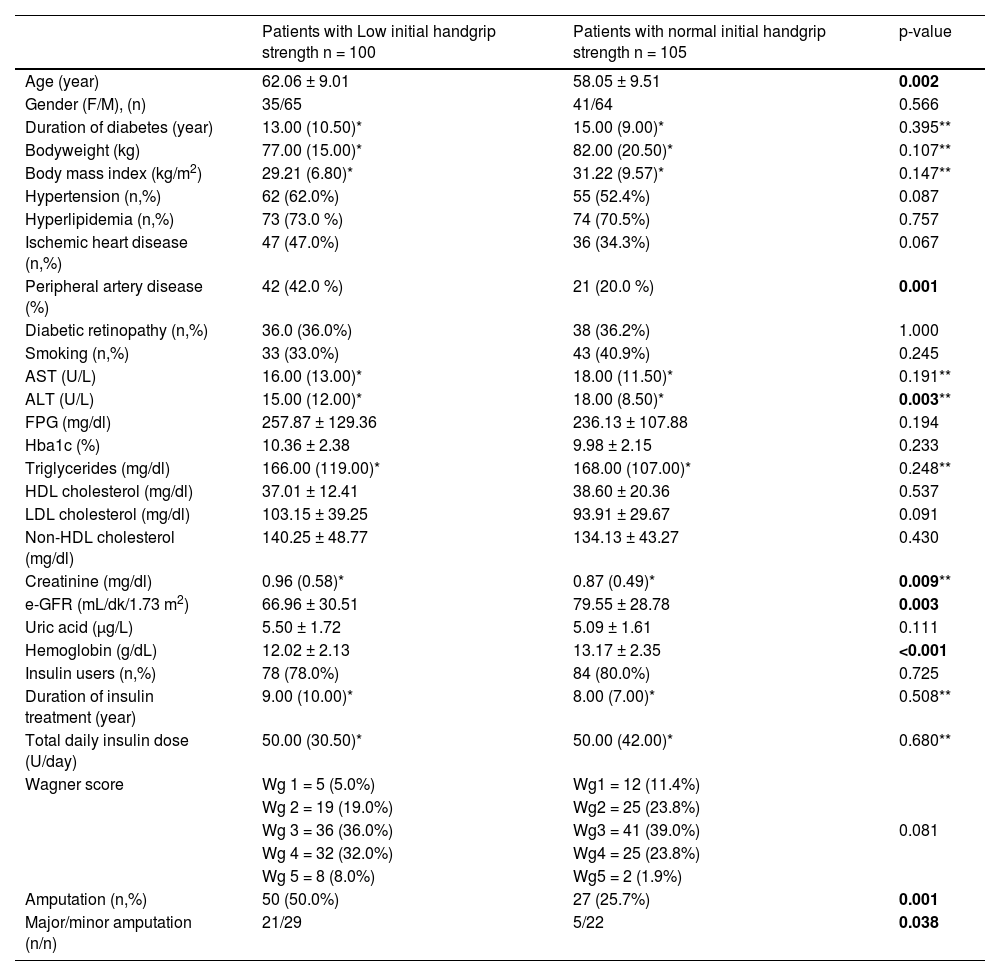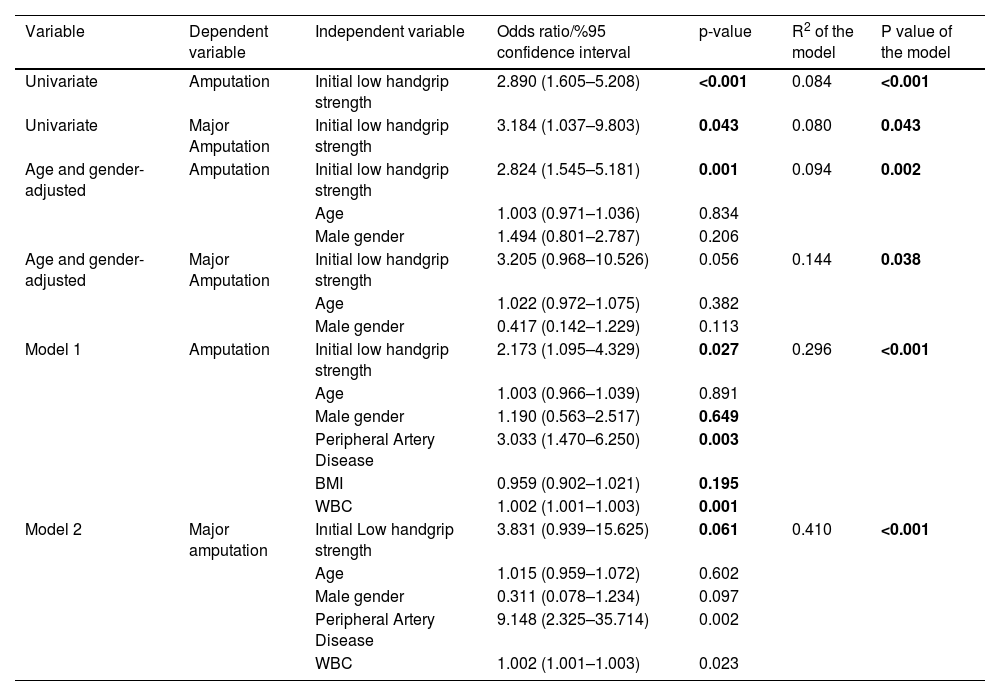We aimed to analyze the prognostic significance of handgrip strength as predictor of lower extremity amputation at 1 year follow up in patients with type 2 diabetes.
MethodsWe evaluated 526 patients with type 2 diabetes between August 2020, and, June 2022. We collected from the electronic medical records demographic variables, laboratory data and history of amputation. The handgrip strength was assessed using a handheld Smedley digital dynamometer following the NHANES Muscle Strenght/Grip Test Procedure. Low handgrip strength was defined for women as less than 16 kg and for men less than 27 kg. Outcome variable was major or minor lower extremity amputation.
ResultsA total of 205 patients with complete data entered the study. Patients mean age was 59 years old, 37% were women and the mean diabetes disease duration was 14 years. Seventy-seven (37%) patients suffered from lower extremity mputations (26 major and 51 minor amputations). After controlling for age, gender, presence of peripheral artery disease, body mass index and white cell counts as confounder variables, patients with low handgrip had an increased risk for amputations (Odds Ratio 2.17; 95% confidence Interval: 1.09–4.32; <0.001).
ConclusionLow handgrip stregth is an independent prognostic marker for lower limb amputation at one year in patients with diabetes.
Nos propusimos analizar la significancia pronóstica de la fuerza de agarre manual como predictor de la amputación de extremidad inferior en el seguimiento de 1 año en pacientes con diabetes tipo 2.
MétodosEvaluamos a 526 pacientes con diabetes tipo 2 entre agosto de 2020 y junio de 2022. Recopilamos de los registros médicos electrónicos variables demográficas, datos de laboratorio e historial de amputación. La fuerza de agarre manual se evaluó utilizando un dinamómetro digital manual Smedley siguiendo el Procedimiento de Prueba de Fuerza Muscular/Agarre de NHANES. Se definió una baja fuerza de agarre manual para las mujeres como menos de 16 kg y para los hombres menos de 27 kg. La variable de resultado fue la amputación de extremidad inferior, ya sea mayor o menor.
ResultadosUn total de 205 pacientes con datos completos ingresaron al estudio. La edad media de los pacientes fue de 59 años, el 37% eran mujeres y la duración media de la enfermedad de la diabetes fue de 14 años. Setenta y siete (37%) pacientes sufrieron amputaciones de extremidad inferior (26 amputaciones mayores y 51 menores). Después de controlar la edad, el género, la presencia de enfermedad arterial periférica, el índice de masa corporal y los recuentos de células blancas como variables de confusión, los pacientes con baja fuerza de agarre manual tuvieron un mayor riesgo de amputaciones (odds ratio 2,17; intervalo de confianza del 95%: 1,09−4,32; <0,001).
ConclusiónLa baja fuerza de agarre manual es un marcador pronóstico independiente para la amputación de miembro inferior a un año en pacientes con diabetes.
Article
Diríjase desde aquí a la web de la >>>FESEMI<<< e inicie sesión mediante el formulario que se encuentra en la barra superior, pulsando sobre el candado.

Una vez autentificado, en la misma web de FESEMI, en el menú superior, elija la opción deseada.

>>>FESEMI<<<










